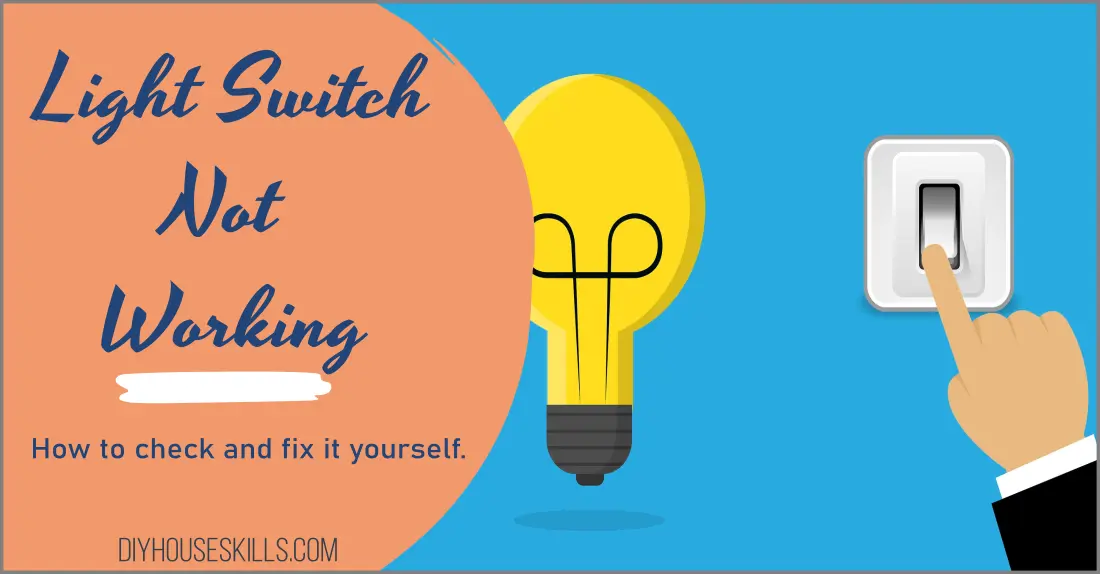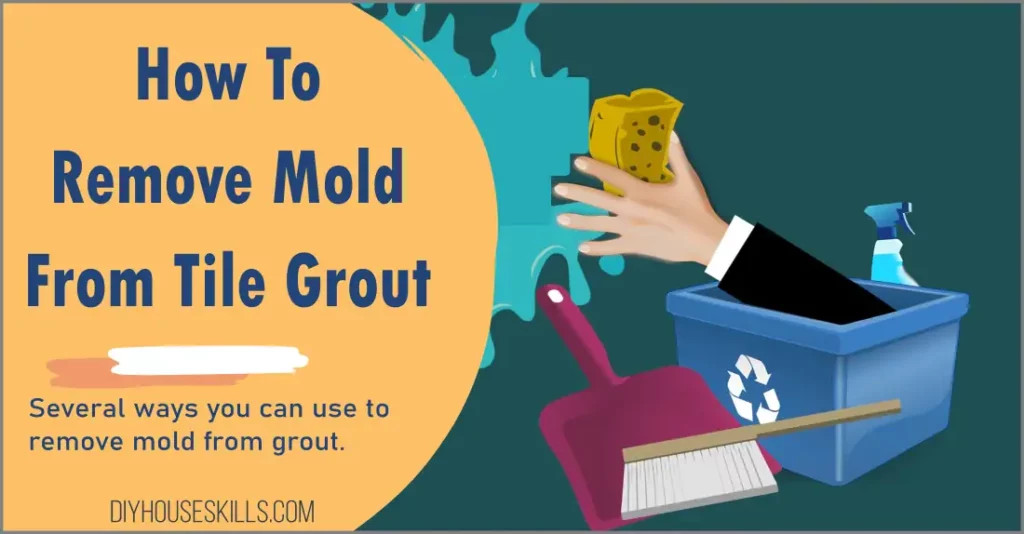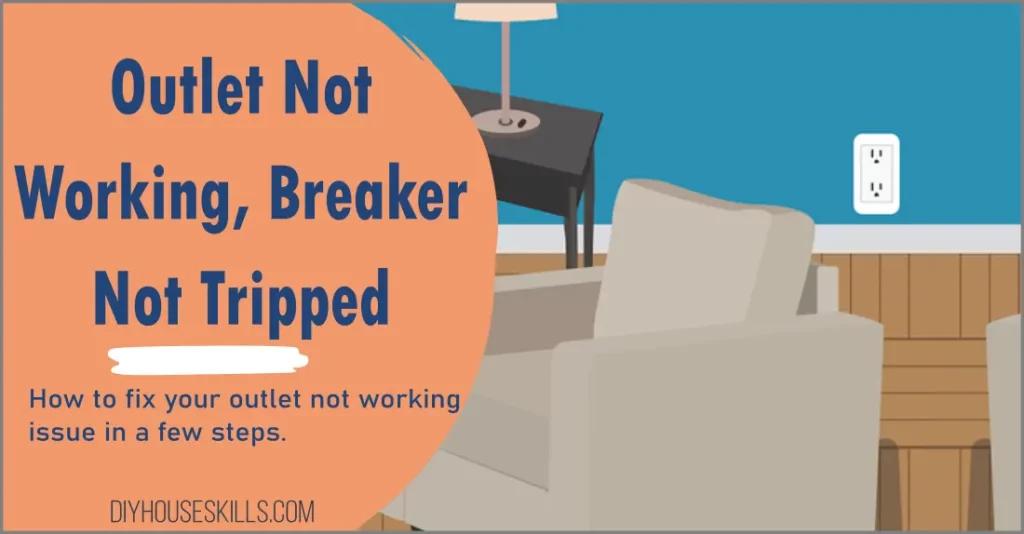Light switches, or wall switches, are simple devices that are easy to take for granted until they stop working. If your light switch is not working, there are a few possible causes.
- In this blog post, we’ll run through a few troubleshooting tips to help you figure out what’s wrong and get your light switch working again.
First, let’s go over a few basics. Most light switches are either single-pole or three-way switches. A single-pole switch controls a light fixture from one location, while a three-way switch controls a light fixture from two locations. Three-way switches are usually found at the top and bottom of a staircase or at either end of a long hallway.
THIS POST MAY CONTAIN AFFILIATE LINKS. As an Amazon Associate, I earn from qualifying purchases. PLEASE READ MY DISCLOSURE FOR MORE INFO.
Note: This information applies to standard-voltage household electricity, not high-voltage receptacles. Never attempt a project that is beyond your skill level. Knowing when to call a professional may help prevent electrical fires, injuries, and fatalities.
Tools needed:
- A Continuity Tester or Multimeter – find on Amazon
- Flathead Screwdriver
Light Switch Is Not Working – What To Do
A light switch that is not working can be caused by a fuse or breaker, loose wiring on the switch, or a faulty switch. Let’s look at each of these below.
1. Check The Fuse or Breaker Panel
If your light switch is not working, the first thing you should do is check the breaker box to see if the circuit breaker has tripped.
Why: You want to establish that there is power feeding the wiring to the light switch.
To fix this problem, locate your home’s main electrical panel and find the circuit breaker that controls the power to your light switch. Once you’ve found it, flip it back “on” and try operating your light switch again. If it’s still not working, move on to the next possible cause.
If the breaker trips again, there may be an issue with the wiring and you may need to call an electrician.
2. Loose or Damaged Wiring
Most issues with single-pole light switches are caused by loose or damaged wiring. You may also hear a buzzing noise or the switch may overheat.
Over time, the repeated motion of flipping the switch can cause the wiring to loosen. This can eventually lead to a break in the circuit, which will prevent the flow of electricity and cause the light switch to stop working.
To check for a loose connection:
- Turn off the power to the circuit at the breaker box.
- Then remove the switch plate, normally held with two flathead screws.
- And, unscrew the switch from the electrical box.
- Carefully pull out the switch from the box bringing the wires with it.
Note: Before proceeding any further, do not touch any bare wires until you have confirmed there is no power. Using a circuit tester, touch one probe to the bare copper grounding wire; touch the other probe to each screw terminal of the switch. The tester should not indicate any power.
Once the switch is removed, inspect the wires to make sure they are tight and secure. If they are loose, tighten them with a screwdriver.
If the wires are damaged, you will need to cut them off and strip the ends before attaching the new wire. Tip: Use fine sandpaper to lightly sand and clean the ends of the exposed wires.
Finally, replace the light switch and the faceplate, then restore power and test if it is working now. If not, proceed to the next step.
3. Faulty Light Switch
If the wiring is tight and secure, the next step is to check for a faulty switch. The most common sign of a faulty switch is flickering lights.
Ensure the power is off at the service panel and remove the switch as shown in the step above.
To test the switch, you will need a continuity tester or multimeter.
- With the power off, attach one lead of the continuity tester to one screw on the side of the switch.
- Then touch the other lead to the other screw.
- Flip the light switch to the on position.
- If the continuity tester light comes on or makes a noise, the switch is good. If not, you will need to replace it.
Explain: With the light switch in the on position, electricity should flow through the switch to allow a lamp or ceiling light to turn on. That is what we are testing for above. You will know the light switch is faulty if your continuity tester does not register a connection.
ALSO READ: Outlet Not Working, Breaker Not Tripped | Advice on how to fix.
Troubleshooting a Faulty Light Switch
If you’ve checked the breaker panel, and the wiring, and replaced the switch, but the light switch still isn’t working, the issue may be more extensive.
For example, you may have a break in the wiring feeding the switch or from the switch to the ceiling fixture.
Inspect the ceiling fixture by removing it and checking the wiring as described above. Again, make sure the power has been turned off beforehand.
It is possible the ceiling fixture has gone bad, in which case, it will need to be replaced.
Call a licensed electrician to help determine where the issue lies and to make the necessary repairs.
Light Switch Problems and Repairs
The circuit breaker repeatedly trips
- Loose wiring connection. Fix as shown above.
- The circuit is overloaded. Relocate fixtures to other circuits.
- Faulty light switch. Replace as shown above.
- Faulty ceiling fixture. Replace as needed.
The light switch buzzes or is warm
- Loose wiring connection. Fix as shown above.
- Faulty light switch. Replace as shown above.
- The circuit is overloaded. Relocate fixtures to other circuits.
Light Switch Is Not Working – Summary
There are a few reasons why your light switch may not be working properly. The first thing you should do is check the fuse box to see if the fuse for the light switch has blown. If it has, you’ll need to replace it with a new one. You should also check the wiring to see if there are any loose connections. If the wiring is loose, you’ll need to tighten it or replace it entirely. In some cases, the light switch may just be worn out and need to be replaced. You can tell if this is the case if the switch is difficult to turn on or off, or if it makes a crackling noise when you turn it on. If you’re not comfortable working with electricity, it’s best to call an electrician to help you fix the problem.

I’m J.S., I created and am the content manager at DIYHouseSkills.com. I do the research and write the articles that appear on this website. I’ve learned many household skills during my life and think it’s important to at least know the basics so that you can save yourself time and money… READ FULL BIO >
- DIY Secrets: Finding and Using the Bosch Ice Maker Reset ButtonHow do I find and use the Bosch ice maker reset button? The Bosch ice maker reset button is typically located at the front or side of the ice maker unit. To reset your Bosch ice maker, press and hold the reset button for about 10 seconds until you hear a beep. This action will reset the system and should help… Read more: DIY Secrets: Finding and Using the Bosch Ice Maker Reset Button
- Say Goodbye to Stubborn Stains on Stainless Steel PotsImmediate Answer Effectively cleaning stainless steel pots involves a few straightforward steps. First, rinse the pot with warm water to remove any loose debris. Next, scrub with soapy water using a non-abrasive sponge. For tough stains, use a paste of baking soda and water or apply vinegar directly. Rinse thoroughly and dry completely to prevent water spots. To maintain their shine,… Read more: Say Goodbye to Stubborn Stains on Stainless Steel Pots
- Effortlessly Remove Mold From Tile Grout with These Easy StepsImmediate Answer To effectively remove mold from tile grout, you need to follow a systematic approach that ensures both the mold is eradicated and future growth is prevented. The process involves using appropriate cleaning agents such as baking soda, borax, hydrogen peroxide, or specialized mold remover solutions, along with scrubbing the affected areas and taking preventative measures to maintain a dry… Read more: Effortlessly Remove Mold From Tile Grout with These Easy Steps
- Proven Strategies to Unclog Your Kitchen Sink EfficientlyUnblocking a kitchen sink can seem like a daunting task, but with the right tools and techniques, you can quickly restore your sink’s functionality without the need for professional help. This guide will walk you through a step-by-step process to unclog your kitchen sink using simple, effective methods. Quick Overview Here’s a quick, effective method to unclog your kitchen sink: For… Read more: Proven Strategies to Unclog Your Kitchen Sink Efficiently
- Outlet Not Working, Breaker Not Tripped | AdviceWhat To Do When Your Outlet Is Not Working But The Breaker Isn’t Tripped Experiencing an outlet that’s not delivering power can be perplexing, especially when the circuit breaker hasn’t been tripped. This common issue can often be resolved without needing to call an electrician. Here’s a quick rundown to help pinpoint and possibly fix the problem: Immediate Solution Note: This… Read more: Outlet Not Working, Breaker Not Tripped | Advice






